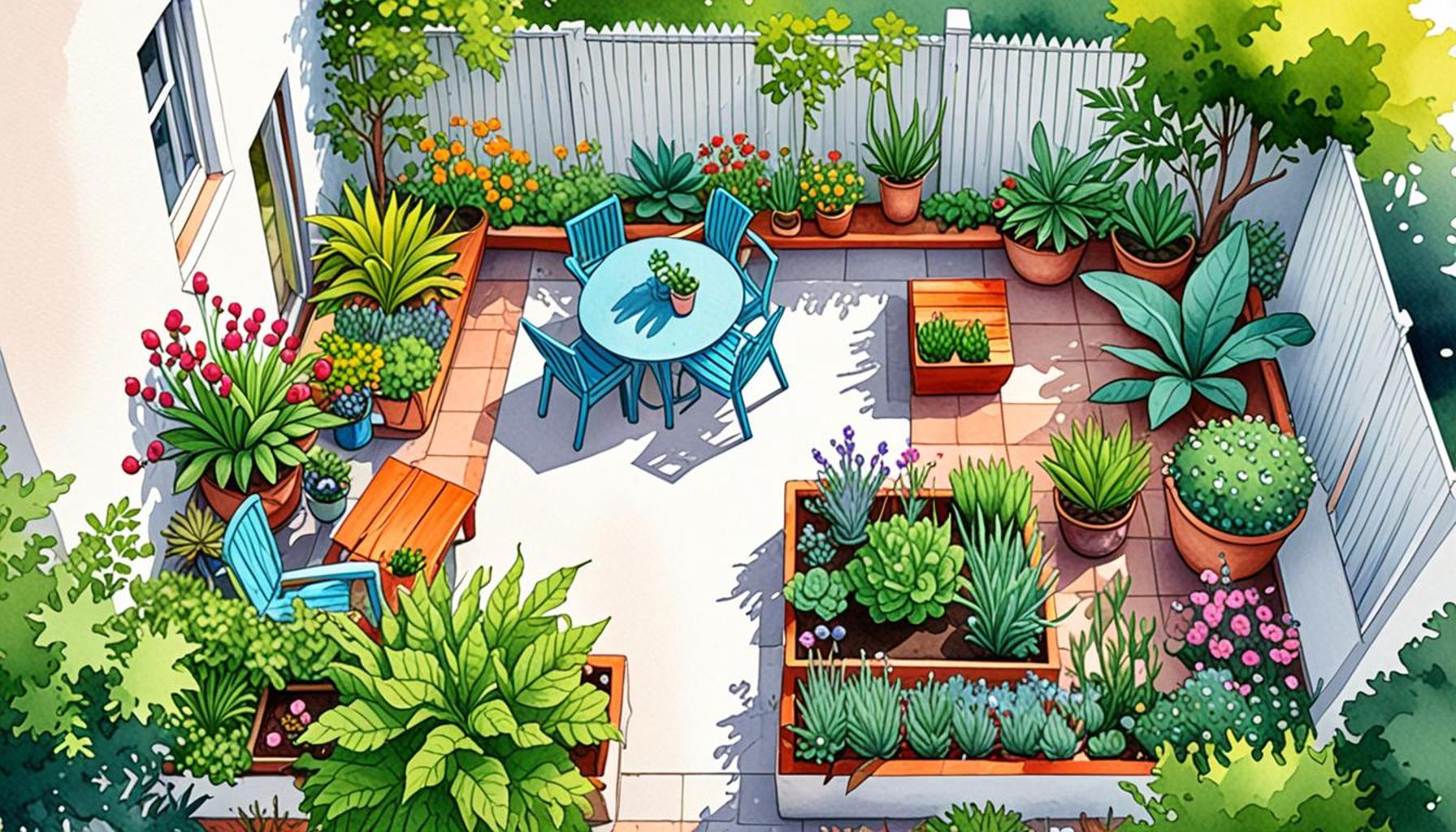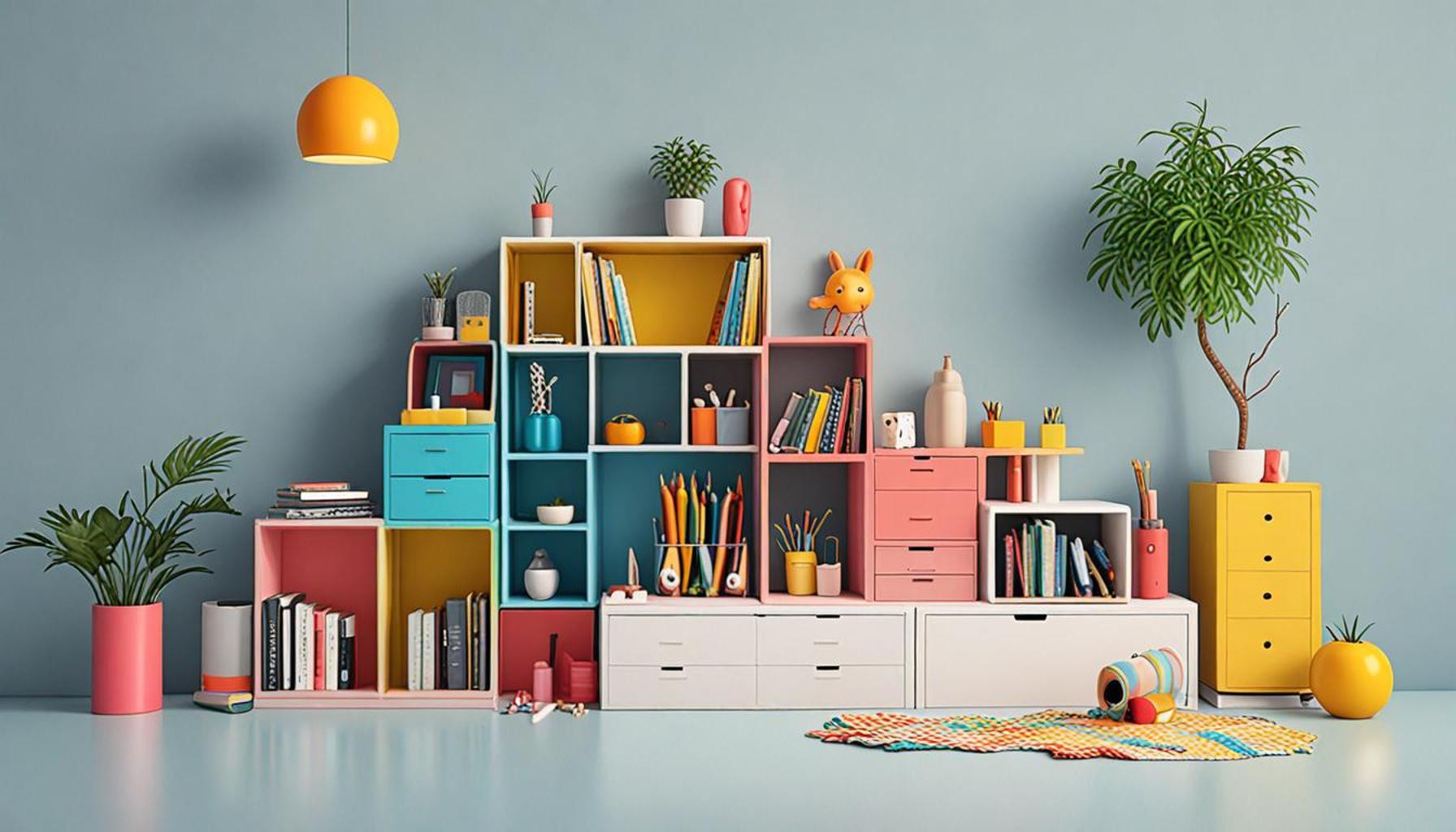Outdoor Minimalism: Designing a Small Garden for Maximum Space Efficiency

Maximizing Urban Space with Outdoor Minimalism
In urban environments, where the landscape is often dictated by concrete and steel, the opportunity to connect with nature can feel like a distant dream. However, for those yearning for a lush escape, the concept of outdoor minimalism provides a pathway to cultivate a flourishing garden in even the smallest of spaces. This design philosophy stands not just as a trend, but as an actionable strategy for homeowners, renters, and urban dwellers alike.
By embracing a minimalist approach, small gardens can become:
- Functional: By integrating essential features such as seating areas, fire pits, or even a small dining table, these spaces can serve multiple purposes. A bench can provide seating by day and serve as storage for garden tools by night.
- Aesthetic: Thoughtful design that includes elements such as color-coordinated plants, decorative stones, or water features can create a visually appealing sanctuary. Even a simple arrangement of plant pots can add depth and dimension to the space while reflecting one’s personal style.
- Sustainable: Using eco-friendly practices is key in today’s environmentally conscious world. Incorporating native plants not only requires less water and maintenance but also attracts local wildlife, contributing to biodiversity.
Key design principles guide this endeavor, such as:
- Strategic layout: Focusing on clear pathways and open spaces can elevate the garden experience. Gardeners can create meandering paths lined with stones or gravel, making the space feel larger and more inviting.
- Multi-purpose furniture: Selecting items that serve various functions is vital. For example, a compact table can be used for dining, gardening prep, or even a workspace for creative projects.
- Vertical gardening: Utilizing walls and fences for climbing plants not only maximizes ground space but also adds an interesting visual layer. Think vertical planters or hanging garden pockets that can accommodate herbs or flowers while saving precious floor area.
Equipped with the right techniques, anyone can transform a compact outdoor area into a sanctuary that mirrors their personality and meets their flourishing landscape needs. By diving deeper into the elements of design and efficiency, one can unveil a world of possibilities, turning small gardens into spaces that are not only functional and beautiful but remarkably inviting. With careful consideration and a little creativity, anyone can harness the power of outdoor minimalism, making a lasting impact on their urban oasis.
DISCOVER MORE: Click here to learn effective decluttering techniques
Harnessing the Power of Smart Design
Effective garden design goes beyond mere aesthetics; it serves as a testament to the balance between function and creativity. Particularly in small spaces, adopting the principles of outdoor minimalism necessitates an understanding of how to utilize every inch of your garden effectively. Transforming a cramped area into a serene retreat begins with identifying essential components that cater to both your practical needs and personal style.
One of the most rewarding aspects of a small garden setup is the opportunity to curate a selection of plants that aligns with your vision. Selecting low-maintenance, drought-resistant plants significantly eases upkeep while ensuring your space remains vibrant. Native plants, such as coneflowers or black-eyed Susans, not only thrive in the local climate but also provide sustenance for local fauna, fostering an ecosystem that benefits both flora and fauna. With the correct selection, one can evoke a landscape that changes throughout the seasons, adding ongoing visual interest without the burden of excessive maintenance.
Incorporating vertical gardening techniques is vital for those with limited ground space. Vertical gardens can consist of:
- Wall-mounted planters: These can easily transform dull walls into verdant displays, perfect for herbs like basil or thyme.
- Hanging baskets: An excellent way to introduce flowers and trailing plants, which draws the eye upward and creates a lush canopy effect.
- Tiered shelving units: By layering plants on shelving units, you can create a vibrant garden that encourages diversity without consuming a lot of ground space.
In addition to plant selection and positioning, the integration of container gardening is an excellent way to add mobility and versatility to your outdoor space. Utilizing pots, raised beds, and even repurposed materials can enhance your garden’s adaptability. For instance, using larger containers allows you to create a centerpiece that also doubles as seating or storage, meaning spaces can serve multiple functions. Drought-resistant succulents, combined with varying levels of soil, can create a striking balance between texture and color.
Furthermore, creating pathways through your garden can significantly affect how space is perceived. Wide, clear paths made of natural materials like gravel or stepping stones can evoke a sense of openness and exploration. When designed well, these pathways can guide visitors throughout your small garden without overwhelming it, promoting an inviting atmosphere.
Ultimately, the understanding of functional design, careful plant selection, and innovative use of space will elevate any small garden into a haven of tranquility. By embracing outdoor minimalism, you don’t just save space; you cultivate an experience that embodies your personal lifestyle while remaining efficient in an urban environment. With an eye for detail and a dedication to simplicity, the possibilities for designing a small yet impactful garden are truly limitless.
Innovative Design Techniques for Small Gardens
Designing a small garden requires a keen eye for detail and an understanding of how to maximize every inch of available space. The concept of Outdoor Minimalism comes into play as it focuses on simplicity, sustainability, and functionality. By employing innovative design techniques, homeowners can create a harmonious outdoor space that feels more expansive than it actually is.
Vertical Gardens: Utilizing Walls
One of the most effective ways to save space is by integrating vertical gardens. These gardens use vertical surfaces to grow plants, which not only frees up ground space but also adds an eye-catching layer to your garden design. Utilizing trellises or wall-mounted planters can allow for a variety of plants to thrive without occupying precious horizontal ground.
Multi-functional Furniture
In small gardens, every piece of furniture should serve more than one purpose. Opt for benches that double as storage units or tables that can be folded away when not in use. This approach not only conserves space but also contributes to a cleaner and more organized appearance, adhering to the minimalist aesthetic.
Layering Plants
Layering plants is an essential technique that enhances vertical interest and ensures a lush look without overcrowding the space. Consider incorporating a mix of tall plants towards the back and shorter ones at the front. This arrangement creates depth and enhances the visual appeal of your garden, making it feel more inviting and spacious.
Smart Lighting
Lighting can transform a small garden by emphasizing its best features and creating an illusion of depth. Consider subtle options like solar-powered pathway lights or string lights that can be draped across plants to add warmth and charm. Thoughtful lighting design can make your outdoor space usable and enjoyable even after sunset.
Emphasizing Natural Materials
Another crucial aspect of Outdoor Minimalism is the use of natural materials which blend seamlessly with the environment. Using stone, wood, and sustainable materials not only aligns with the principles of minimalism but also enhances the beauty of the garden. These elements encourage a connection with nature, promoting a sense of tranquility and relaxation.
Conclusion
Incorporating these innovative techniques and materials into small garden design can significantly enhance space efficiency while embracing the philosophy of outdoor minimalism. Exploring various elements and styles allows for endless possibilities; challenging the notion that small spaces cannot deliver on aesthetics. The adventure lies in creating a garden that is not only functional but also a personal sanctuary amidst the clutter of everyday life.
| Advantage | Description |
|---|---|
| Vertical Growth | Enhances the use of wall space, allowing plants to thrive without occupying ground area. |
| Multi-functional Elements | Furnishings that serve multiple purposes help keep spaces tidy and efficient. |
| Natural Materials | Incorporating sustainable materials harmonizes the space with the natural environment and promotes tranquility. |
DISCOVER MORE: Click here to learn how decluttering can boost your productivity
Maximizing Functionality with Multi-Purpose Features
When delving into the essence of outdoor minimalism, functionality should be at the forefront of your garden design. Incorporating multi-purpose features enhances space efficiency, allowing you to elevate both practicality and aesthetics simultaneously. By designing elements that serve multiple functions, you can make the most of your compact garden without cluttering it.
Consider the integration of foldable furniture such as benches, tables, and chairs. These types of installations retain the functionality of traditional garden furniture but can be neatly tucked away when not in use. Opt for options made from weather-resistant materials, ensuring durability and longevity in various weather conditions. For instance, a folding dining table can transform from a casual resting spot to a dinner venue, bringing versatility to your outdoor dining experience.
Additionally, integrating built-in seating within garden walls or raised planter beds maximizes space without disturbing the existing layout. These designs not only save area but can also contribute an informal gathering place. Imagine a cozy nook nestled amidst lush greenery, inviting friends to pause and enjoy the surroundings. Surrounding it with drought-tolerant plants ensures it remains an aesthetically pleasing focal point throughout the seasons.
An often-overlooked aspect of small garden design is the use of color and light. Lighter-colored surfaces can reflect light and create an illusion of a larger space, while strategic positioning of mirrors or reflective materials can amplify this effect. Placing a well-angled mirror on a garden wall can help create the illusion of depth, making the garden feel more expansive. Furthermore, incorporating landscape lighting adds a layer of magic in the evenings while also enhancing safety. LED lights can be subtly integrated into pathways, planters, or within seating areas to bring warmth and interest after the sun sets.
Water features, though sometimes perceived as luxuries, can emerge as serenity-enhancing elements, even in a small garden. A small fountain or a birdbath can act as both a calming focal point and a way to attract local wildlife. These elements create ambiance through sound and movement, revitalizing the space while maintaining the principles of minimalism. Choose scales and designs that align with your garden’s theme, such as a sleek, modern water wall or a rustic stone fountain.
Smart storage solutions are another cornerstone of efficient small garden design. Incorporating benches or planters that double as storage units allows you to keep gardening tools and cushions safe from weather and clutter. Consider vertical wooden slats with built-in compartments or using decorative baskets tucked beneath seating arrangements for a clean, streamlined look.
Lastly, don’t underestimate the impact of a well-thought-out layout and flow. Arranging plants, furniture, and features in a way that mimics natural landscapes will ensure the space feels cohesive and well-balanced. Experiment with diagonal lines or curved paths instead of straight lines to create a sense of movement. This visual journey can evoke a much richer experience, inviting you to explore every corner of your precious outdoor retreat.
By prioritizing multi-functional elements and intentional design choices, the practice of outdoor minimalism in a small garden becomes a celebration of efficiency and beauty. This approach not only allows for a harmonious blending of form and function but also transforms your garden into an essential extension of your living space.
DIVE DEEPER: Click here to discover how password management can simplify your life
Conclusion
In an era where urbanization shrinks living spaces, embracing outdoor minimalism in garden design becomes increasingly essential. Creating a small garden that ensures maximum space efficiency is not just about aesthetic appeal; it’s about cultivating an environment that enhances your lifestyle. By prioritizing multi-purpose features, you can seamlessly integrate function with beauty, allowing for a versatile outdoor experience that adapts to your needs; your garden can transform from a peaceful retreat into a bustling entertainment area with just a few thoughtful adjustments.
Utilizing smart storage solutions, thoughtful layout, and strategic lighting can dramatically change how you perceive and use your garden space. Each design choice plays a vital role in creating a harmonious atmosphere—one that encourages relaxation while serving various purposes. Whether it’s a cozy nook surrounded by plants, efficient foldable furniture, or an inviting water feature, the options are endless.
Moreover, cultivating a space that reflects your personal taste and brings nature closer can significantly enhance your quality of life. As you embark on your journey towards designing your small garden with these principles in mind, you will discover that less can indeed be more. A minimalistic approach can foster a deeper connection with the outdoors, granting you the serenity and inspiration that any home deserves.
In conclusion, embracing outdoor minimalism invites creativity and innovation, allowing small garden enthusiasts to enjoy their spaces fully. With mindful design and intentionality, your garden can transcend its size, becoming a vibrant extension of your home, rich in both practicality and tranquility.



